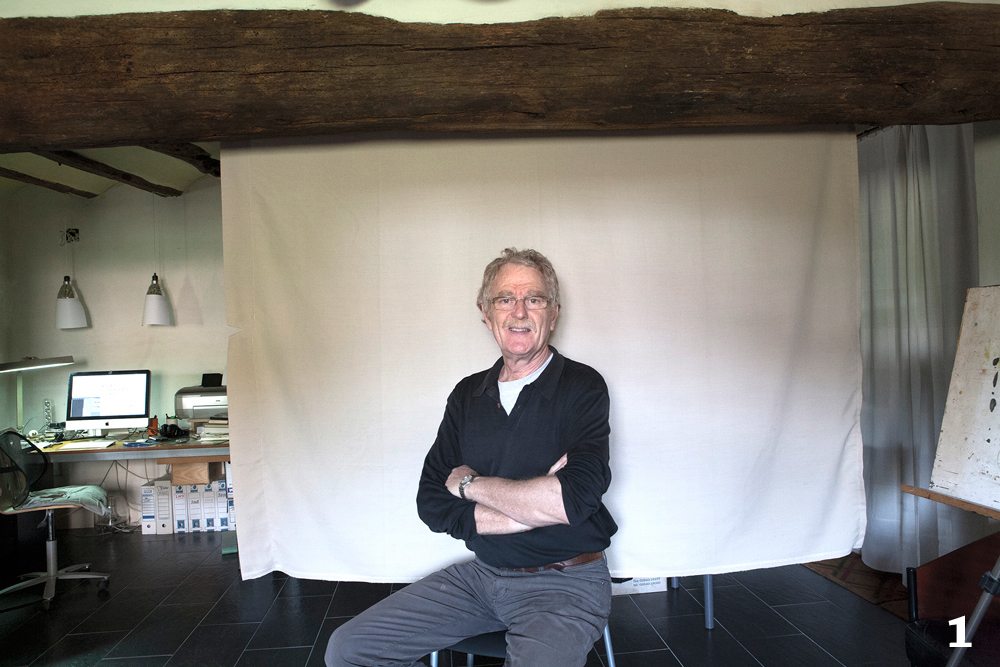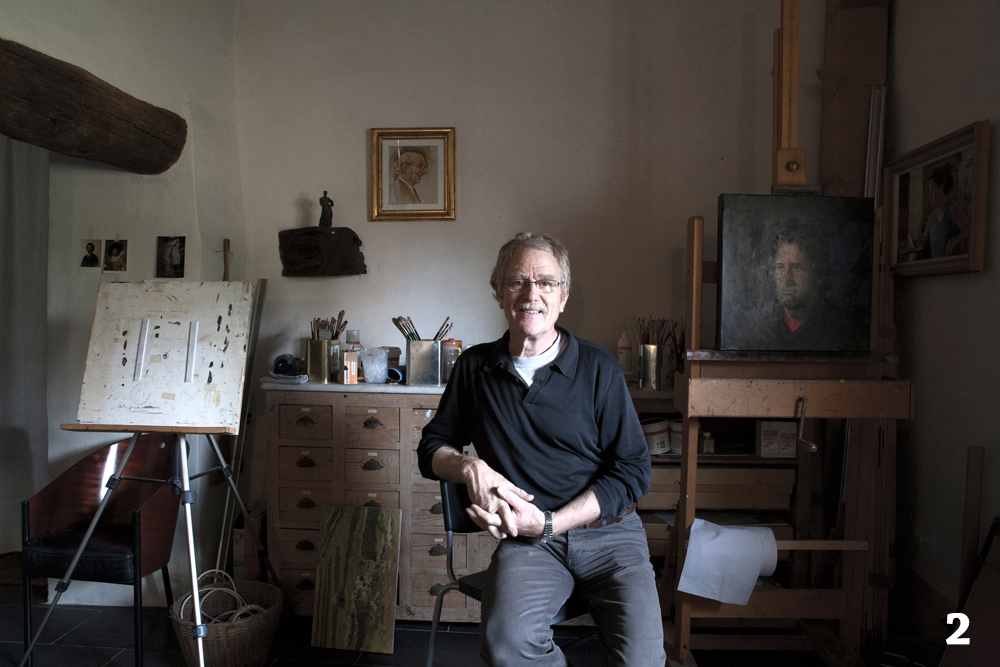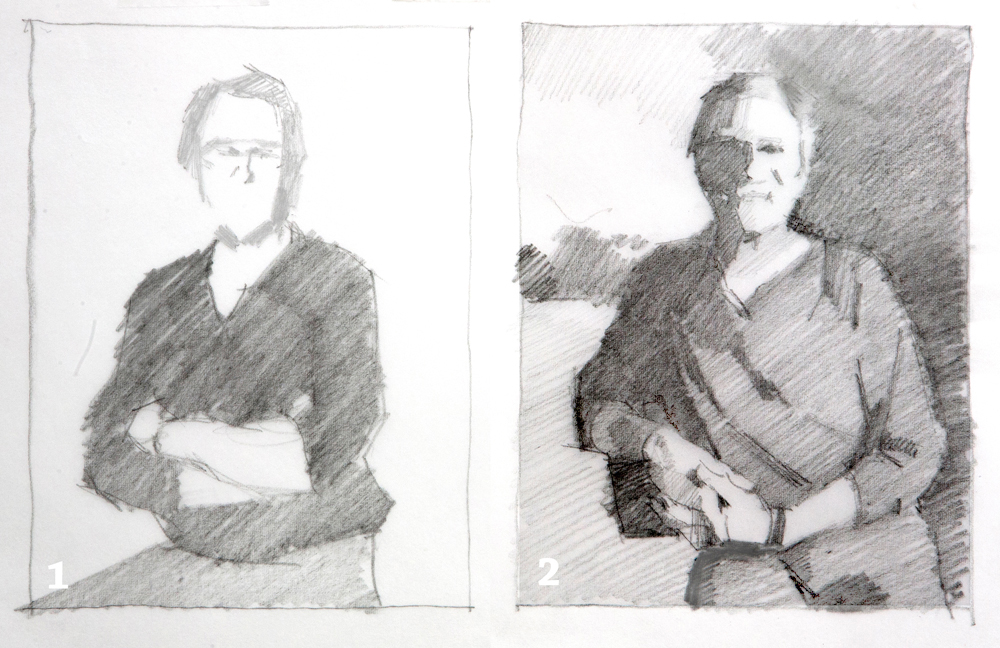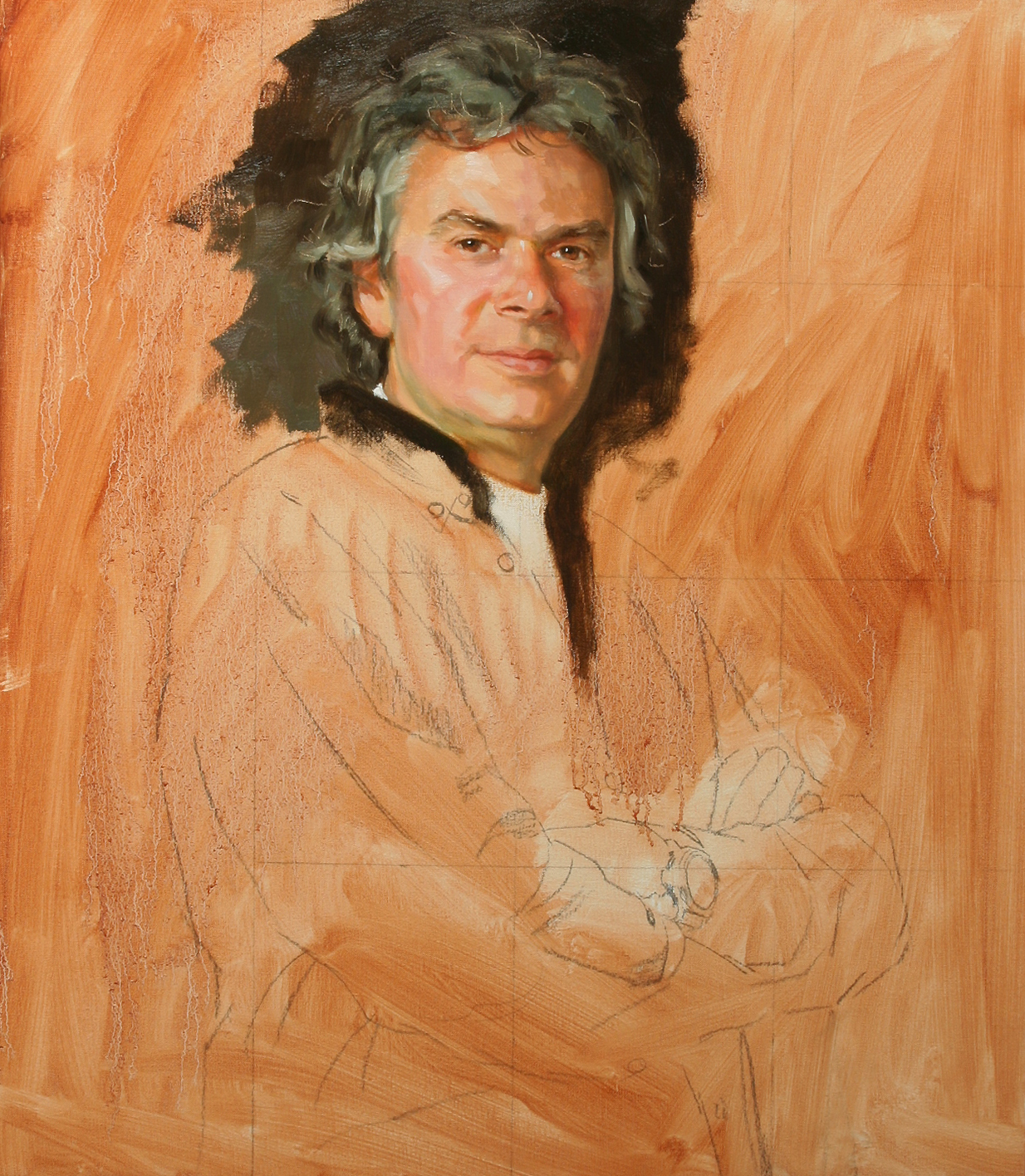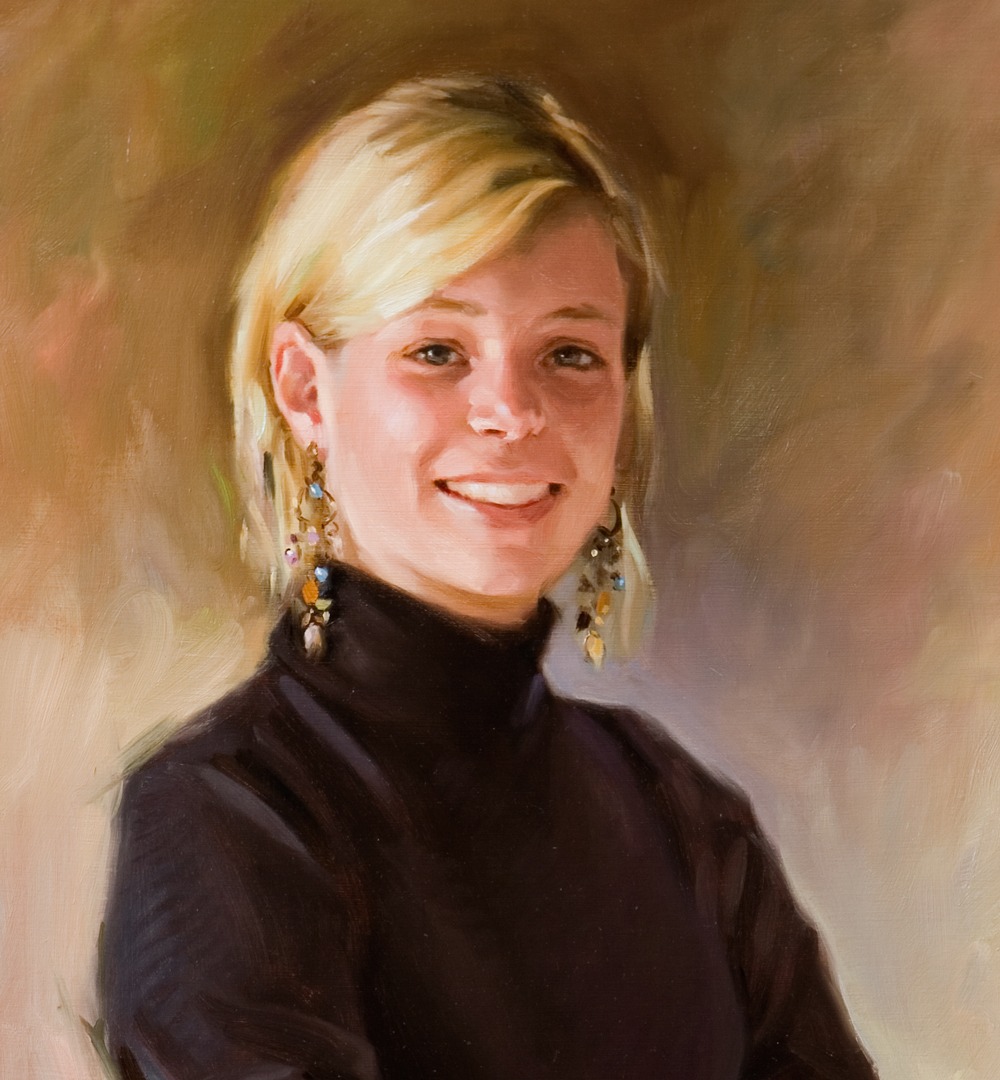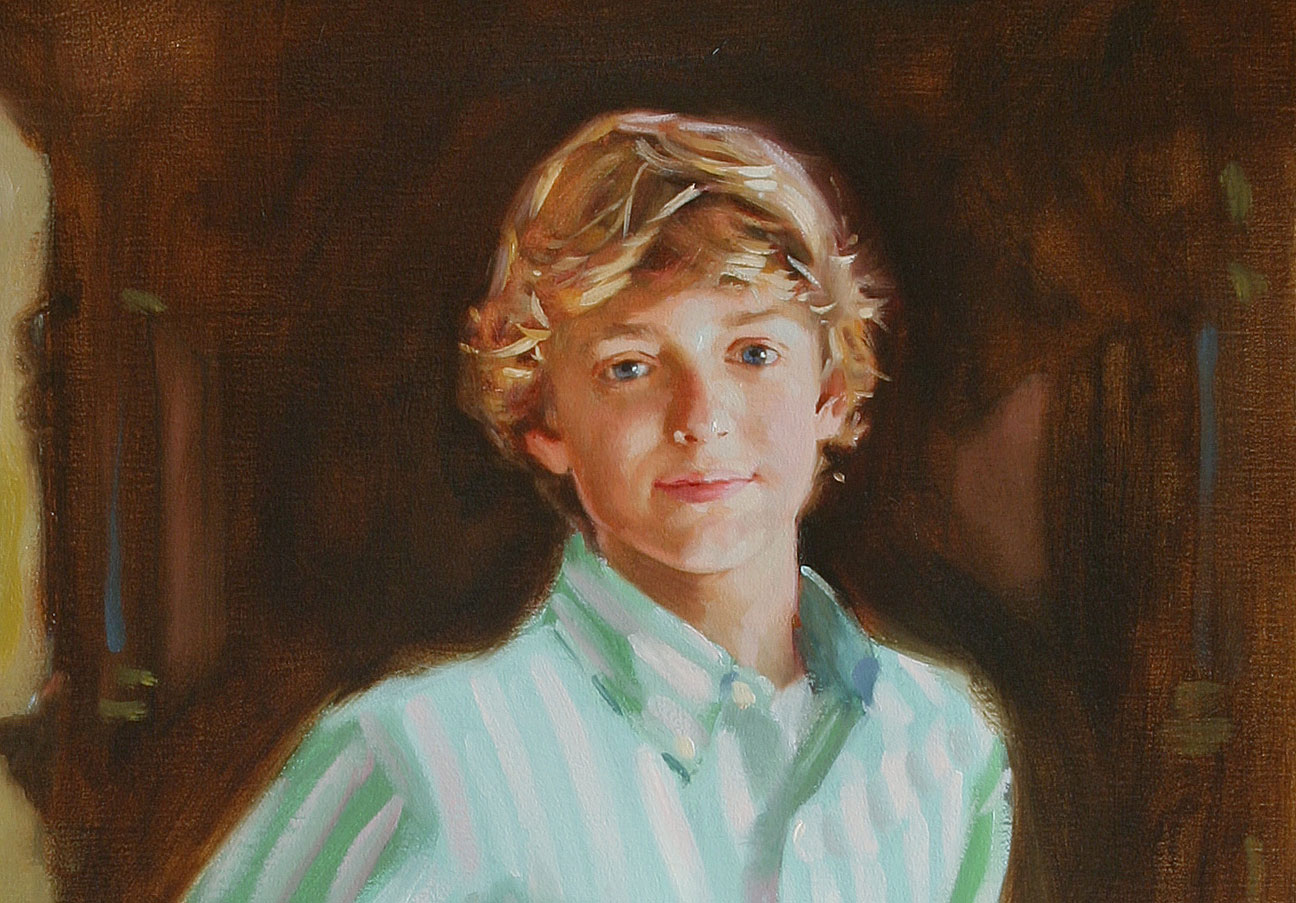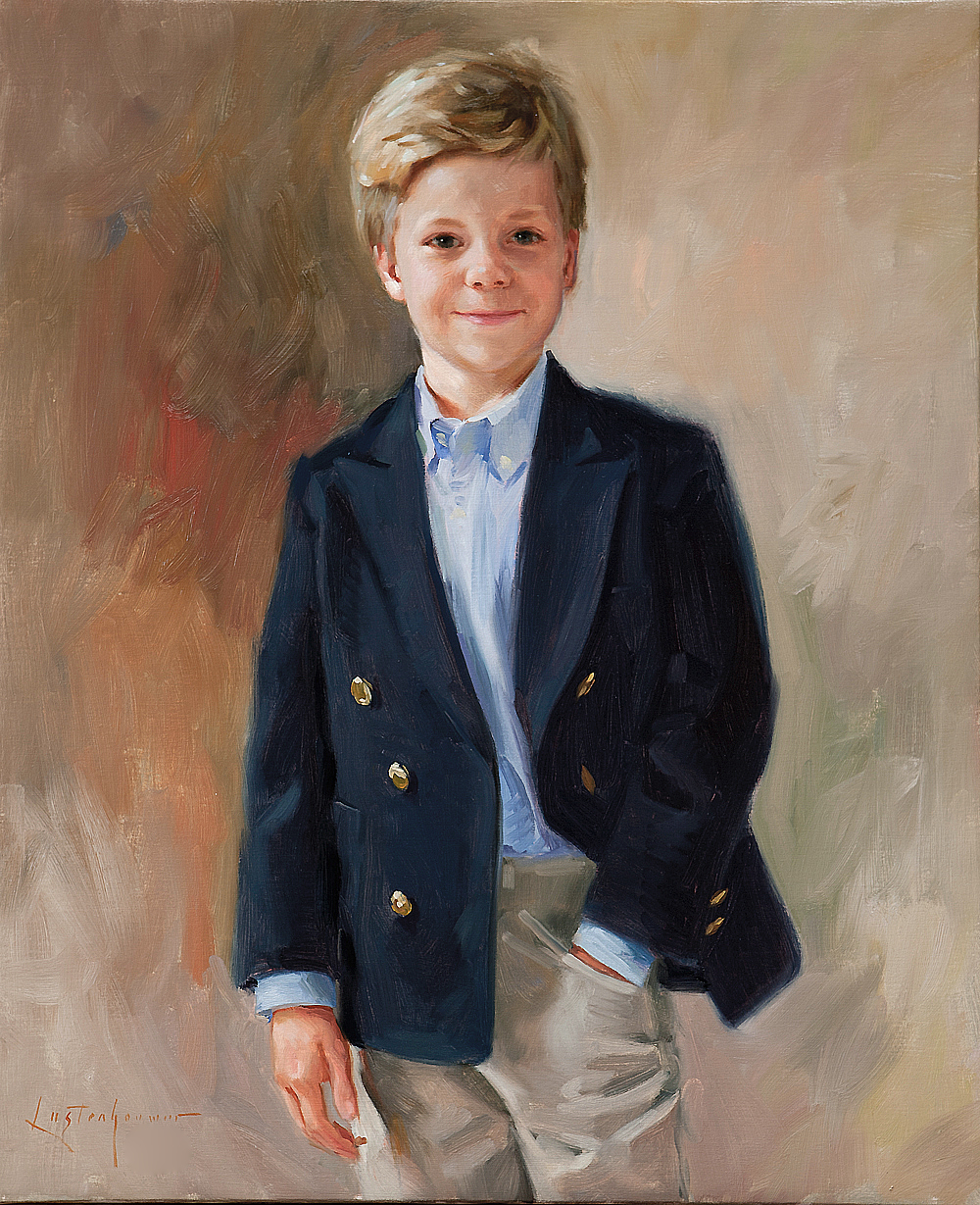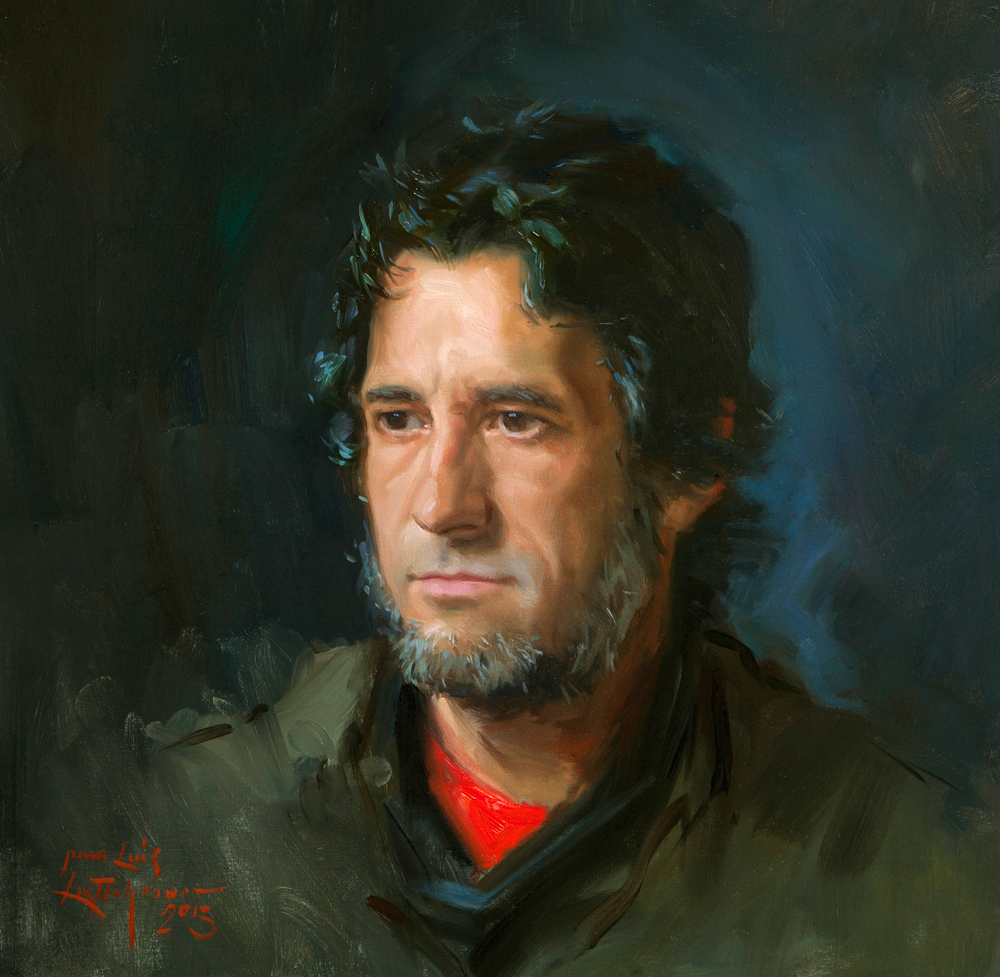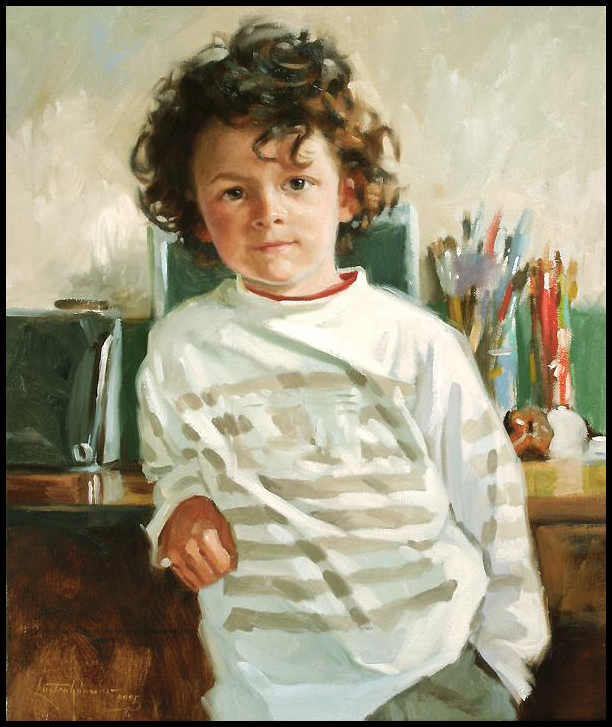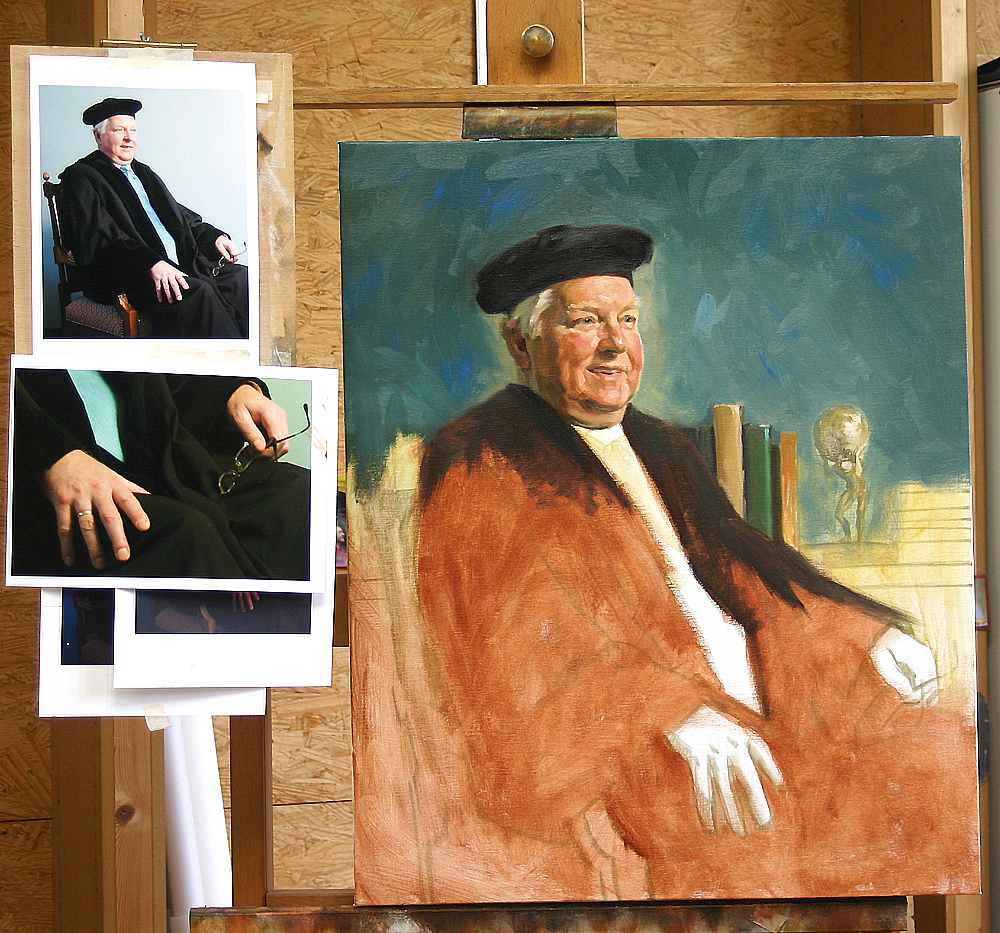
I like to see half finished paintings, even of my own work. It says something about the work process. Was it the Dutch writer Cees Nooteboom who once said “Traveling is better than arriving”? I just found this image of a half painted portrait. Here you see: I am traveling. It is not finished; not yet at my place of destination. Often I enjoy more of the process itself then the finished product.

Also this picture reminds me of something else. I see the small statue in the background. It represents the Greek mythologic figure of Atlas who held up the celestial sphere. I added this prop at the special request of the sitter, the retiring Professor of Philosophy at Vrije Universiteit of Amsterdam. For lack of good reference material I made a sculpture in plastiline myself and painted it with acrylics to imitate the bronze patina. I really like to prepare things blow by blow. Not a lick and a promise.

